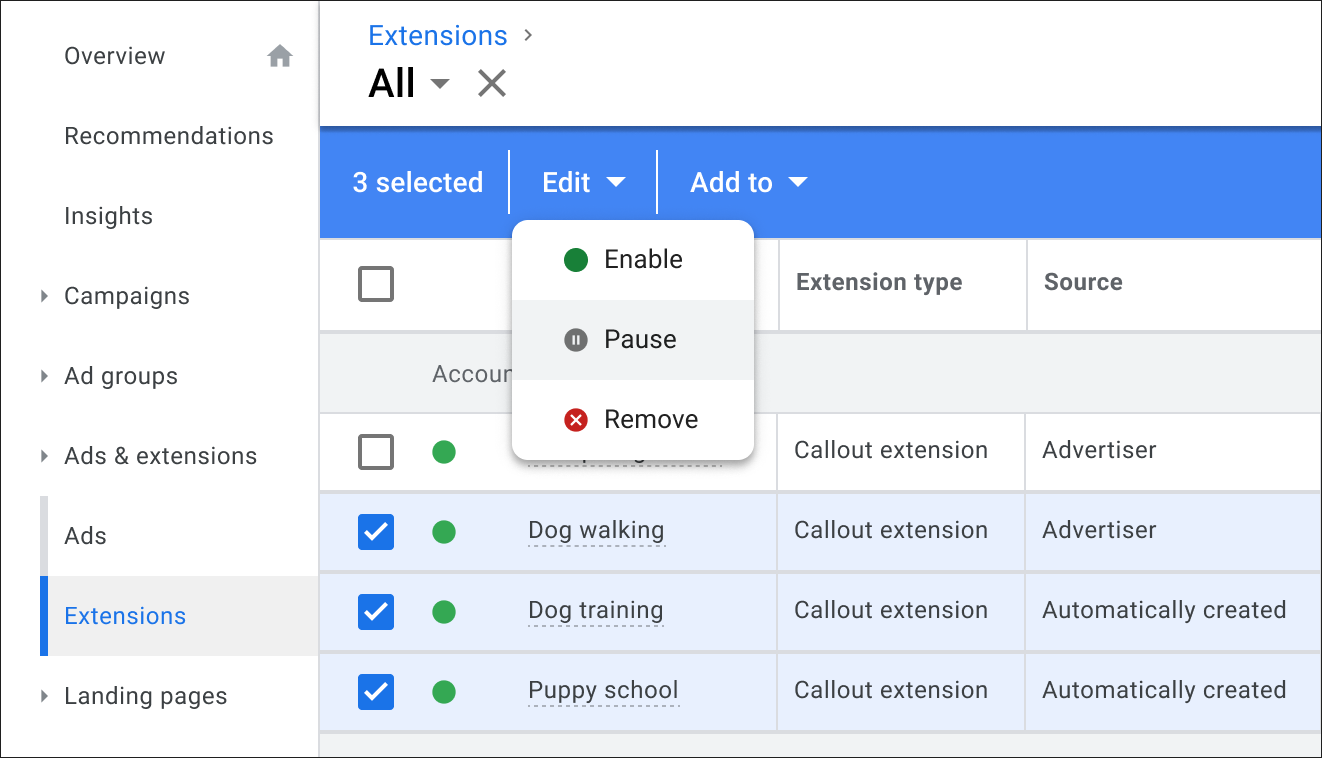Create SEM Ad Copy Like a Pro: Expert Tips & Tricks
Are you tired of struggling to create SEM ad copy that doesn’t deliver results? It’s time to take control of your SEM campaigns and create ad copy that stands out, entices users, and boosts conversions. This comprehensive guide will provide you with expert tips and tricks on how to create SEM ad copy, optimizing it for search engines, enhancing it with extensions, perfecting your landing pages, and staying ahead of search trends. Let’s dive in and elevate your SEM ad copy game!
Key Takeaways
- Create compelling SEM ad copy with persuasive language, attention-grabbing headlines and strong calls to action.
- Optimize ad copy for search engines through keyword targeting and utilizing negative keywords.
- Enhance ads with extensions, perfect landing pages by optimizing content & UX design, analyze & adapt to search trends.
Crafting Compelling SEM Ad Copy

The foundation of any successful SEM ad copy lies in its ability to grab attention, persuade users with compelling language, and encourage them to take action. By focusing on these key elements and mastering the art of writing ad copy, you can create compelling ad copy that stands out on search engine results pages, resonates with your target audience, and ultimately drives more conversions.
Attention-Grabbing Headlines
A captivating headline is the first thing users see when they encounter your ad on search results pages. It’s your chance to make a strong impression and convince users that your product or service is the one they need. For an effective headline, it’s best to keep it concise and keyword-rich, directly addressing users’ search queries and highlights your unique selling proposition.
Don’t underestimate the power of numbers! Including statistics or percentages in your headlines can help users quickly grasp the benefits of your offer, boosting your ad’s click-through rate. Remember, a great headline is your ticket to capturing users’ attention and enticing them to explore your ad further.
Strong Calls to Action
A powerful call to action (CTA) is essential for guiding users towards the desired action, whether it’s making a purchase, signing up for a newsletter, or downloading a resource. Creating a strong CTA involves focusing on relevance, specificity, and instilling a sense of urgency.
For example, instead of a generic “Learn More,” try “Get 50% Off Today!Don’t miss out on your chance to try it for free! Claim your free trial now. Incorporating urgency and highlighting the benefits of taking action encourages users to act quickly and increases the chances of converting them into customers.
And remember, when in doubt, experimentation is key! Test different CTAs to identify the most effective options for your target audience.
Persuasive Language
The final ingredient in crafting compelling SEM ad copy is persuasive language. By emphasizing the advantages and unique selling points of your product or service, you can make your ads more appealing to potential customers. Writing SEM ad copy with power words and action verbs can evoke emotions and create a sense of urgency, while benefit-oriented copy demonstrates how your product or service addresses a specific problem or need.
Don’t be afraid to use social proof and testimonials in your ad copy. Customer quotes, ratings, or the number of satisfied customers can provide credibility and persuade potential customers to choose your offering over the competition.
Ultimately, persuasive language is the key to turning interested users into loyal customers.
Optimizing SEM Ad Copy for Search Engines

While crafting compelling ad copy is crucial, it’s equally important to optimize your ads for search engines. This involves targeting relevant keywords, utilizing negative keywords to filter out irrelevant searches, and monitoring competitors’ ads.
Focusing on these aspects improves your ad’s visibility, attracts more potential customers and maximizes the return on your ad spend.
Targeting Keywords
To ensure your ads reach the right audience, it’s crucial to target keywords that are relevant to your product or service. Conducting keyword research with tools like Google’s Keyword Planner or SEMrush can help you identify the terms your target audience uses when searching online.
Once you’ve identified your target keywords, incorporate them into your ad copy to increase its relevance and appeal. Focusing on the most pertinent keywords ensures your ad is visible to the right audience, boosting your chances of attracting interested users and driving conversions.
Utilizing Negative Keywords
Negative keywords play a crucial role in optimizing your ad copy by preventing your ads from showing up for irrelevant searches. Adding negative keywords to your campaigns avoids wasting budget on unrelated clicks and improves the efficiency of your ad spend.
To identify and add negative keywords to your campaigns, follow these steps:
- Research your target audience and understand their search behavior. This will help you pinpoint terms that are not relevant to your product or service.
- Prevent your ads from appearing when users search for those irrelevant terms by adding them as negative keywords.
- Regularly review and update your negative keyword list to ensure your ads remain focused on the most relevant searches.
Monitoring Competitors’ Ads
Keeping an eye on your competitors’ ads can provide valuable insights into their strategies and help you identify new keywords or tactics that can be incorporated into your own campaigns. Monitoring competitors’ ads helps you stay ahead of the competition and continuously refine your ad copy strategy.
To monitor competitors’ ads, you can use tools like Google Ads, SpyFu, or SEMrush. These tools allow you to see the keywords your competitors are targeting and analyze the ad copy they are using. By learning from competitors’ successes and failures, you can optimize your own ad campaigns and achieve better results.
Enhancing SEM Ads with Extensions

Beyond crafting compelling ad copy and optimizing it for search engines, you can further enhance your SEM ads with extensions. Callout extensions, site links, and the Ad Preview and Diagnosis Tool are excellent ways to improve your ads, making them more informative, engaging, and ultimately driving better results.
Callout Extensions
Callout extensions offer advertisers the ability to emphasize particular traits and advantages of their product or service in SEM ads. This is an effective way of drawing more attention to your offering. These additional lines of text appear below the main description, allowing you to emphasize offers like free shipping, discounts, or special promotions.
To set up callout extensions in Google Ads, follow these steps:
- Sign in to your account.
- Navigate to the “Ads & Extensions” tab.
- Click on the “+ Extension” drop-down menu.
- Select “Callout” to complete the process.
Using callout extensions makes your ads more attractive to users and sets you apart from the competition.
Site Links
Site links are additional links that can be added to your SEM ads, directing users to specific pages on your website. By providing users with quick access to relevant information, site links can improve the user experience, boost click-through rates, and increase conversions.
To add site links to your ads in Google Ads, follow these steps:
- Log into your Google Ads account.
- Navigate to the “Ads & Extension” tab.
- Click “+Extension”.
- Select “Site Links” from the drop-down menu that appears.
Incorporating site links helps users navigate your website more easily and enhances the performance of your SEM ads.
Ad Preview and Diagnosis Tool
Google’s Ad Preview and Diagnosis Tool is an invaluable resource for testing and previewing your ads. It allows you to see how your ads appear across different devices and locations, ensuring they are displayed accurately and without errors.
Using the Ad Preview and Diagnosis Tool helps you:
- Identify any issues with your ads
- Make necessary adjustments to optimize their performance
- Guarantee that your ads are presented accurately
- Resonate with your target audience
- Drive more conversions.
Perfecting Landing Pages for SEM Campaigns

Your landing pages play a crucial role in the success of your SEM campaigns. Ensuring relevance and consistency between your ad copy and landing page content, optimizing user experience, and conducting A/B testing improves your landing pages and boosts your campaign performance.
Relevance and Consistency
Maintaining relevance and consistency between your ad copy and landing page content is key to providing a seamless user experience. When users click on your ad, they expect to find information that matches the promises made in your ad copy. Failing to deliver can result in lost trust and reduced conversions.
To ensure relevance and consistency, make sure your landing page content directly relates to your ad copy and maintains the same messaging and style. This not only creates a cohesive experience for users but also increases the likelihood of them taking the desired action, such as making a purchase or signing up for your newsletter.
User Experience
User experience (UX) is a key factor in the success of your landing pages. A well-designed, visually appealing, and mobile-friendly landing page can greatly enhance user experience and increase conversions.
To create a user-friendly landing page, ensure it has the following features:
- Easy navigation
- Aesthetically pleasing design
- Optimization for mobile devices
- Clear and concise language
- Relevant information presented in an easily accessible format
By focusing on UX design, you can create landing pages that not only look great but also drive results.
A/B Testing
A/B testing is a powerful tool for optimizing your landing pages and maximizing the effectiveness of your SEM campaigns. By creating two versions of a landing page and comparing their performance, you can identify the most effective elements and make data-driven improvements to your pages.
To conduct A/B testing, follow these steps:
- Create two versions of your landing page with different headlines, images, or calls to action.
- Use a tool to split traffic between the two versions.
- Measure their performance based on metrics like page views, conversions, and click-through rates.
Leveraging the results of A/B testing allows for continuous refinement of your landing pages and improved performance.
Analyzing and Adapting to Search Trends

In the ever-changing world of SEM, it’s crucial to stay up-to-date with search trends and adapt your ad copy accordingly. Here are some strategies to help you do that:
- Use tools like Google Trends to identify popular search terms and topics.
- Make seasonal adjustments to your ad copy to align with current trends and events.
- Stay informed about industry developments and incorporate relevant keywords and phrases into your ad copy.
By following these strategies, you can ensure that your ad copy remains relevant and appealing to your target audience.
Keeping up with the latest trends and developments in SEM can be a challenge, but it
Google Trends
Google Trends is a powerful tool that provides insights into the search volume and interest over time for specific keywords or topics. Identifying search trends and adjusting your ad copy accordingly ensures your ads stay relevant and appealing to potential customers.
Keep an eye on Google Trends to spot emerging trends and opportunities in your industry. By staying informed and adapting your ad copy to reflect current search trends, you can maintain a competitive edge and maximize the performance of your SEM campaigns.
Seasonal Adjustments
Consumer behavior and preferences change throughout the year, and your ad copy should reflect these seasonal fluctuations. Making seasonal adjustments to your ad copy capitalizes on changing trends and ensures your ads resonate with users during different times of the year.
Stay on top of seasonal trends by monitoring search data and adjusting your ad copy to reflect popular search terms during specific periods. Whether it’s highlighting special holiday promotions or emphasizing seasonal products, adapting your ad copy to align with seasonal changes can help you capture more users and drive better results.
Staying Informed
To maximize the success of your SEM campaigns, it’s important to stay informed about the latest industry trends and best practices. Following industry resources like Search Engine Land or Moz can help you keep up-to-date on current developments and discover new strategies for optimizing your ad copy.
Staying informed and continuously refining your ad copy strategy based on the latest insights ensures your SEM campaigns remain effective and continue to drive results. Remember, staying ahead of the curve is key to maintaining a competitive edge in the ever-evolving world of SEM.
Summary
In conclusion, creating effective SEM ad copy involves a combination of crafting compelling headlines, persuasive language, and strong calls to action, optimizing your ads for search engines, enhancing them with extensions, perfecting your landing pages, and staying informed about search trends. With these expert tips and tricks in hand, you’ll be well on your way to elevating your SEM ad copy game and achieving better results for your campaigns.
Frequently Asked Questions
How do I write a SEM ad copy?
To write a successful SEM ad copy, consider the needs and search intents of your audience. Create headlines with powerful words and clear calls to action (CTA). Tailor your ads for different personas in your target market and ensure that you focus on the benefits of your product. Test, analyze, and optimize frequently for maximum results.
How do I create a copy of an ad in Google ads?
To create a copy of an ad in Google Ads, first sign into your account and go to the Campaigns tab in the interface. Check the box of the campaign you want to duplicate and select the 'Copy' option from the Edit menu. Depending on how fast the Google servers are, will depend on how quickly it copies.
How do I write a display ad copy?
Research your ad platform and audience to ensure all copy aligns with your brand identity. Use empathy in the copy, hone in on search intent and specific queries, write a strong headline for people, not search engines, and include an effective call-to-action (CTA) for maximum impact.
What are callout extensions and how can they enhance my SEM ads?
Callout extensions are an effective tool to highlight unique offers, benefits, or selling points of products and services, providing greater visibility in search engine marketing (SEM) ads. Callout extensions can be used to draw attention to special offers, discounts, or other incentives that may be available. They can also be used to emphasize the unique features of a product or service, or to highlight the benefits of a particular brand. By making these elements
How can I perfect my landing pages for SEM campaigns?
Optimize your landing pages for SEM campaigns by ensuring relevance between ad copy and content, improving user experience, and running A/B tests. Make sure your ad copy and content are relevant to each other. This will help your visitors understand what they are looking at and why they should take action. Improve the user experience on your landing pages.
Join thousands of business-savvy entrepreneurs on our mailing list.
Curated emails that’ll help you manage your finances better.




